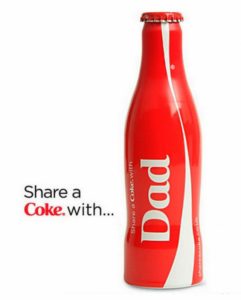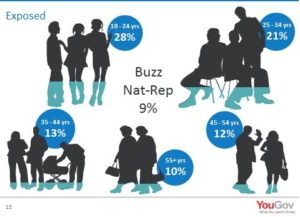Taking your business to the next level is a step-by-step process.
There are two things that every entrepreneur wishes for: more time and more money. We yearn for more time because balancing any semblance of a career with the demands of a family life, friends and other interests, becomes overwhelming.
We desire more money so that we can run ads or pay for employees or expand our operations, and everything else in between. Yes, having more money would be great but it’s wasted if you don’t know how to spend or properly invest that money on marketing or growing your business.
The truth? It’s often hard to find time to do anything when you’re enthralled in the perils of building or scaling a business to any degree. Not only do you need to effectively bootstrap your growth by wearing many hats, you also need to constantly work to increase your skill set while struggling to wrangle sales, dealing with customer service and tending to other tedious issues that tend to take up a large chunk of time.
If there never seems to be enough hours in your day, join the club. If you’re not properly managing your time with an effective time management system, or you’re immersed in one bad habit after another that seems to be eating away at all the precious moments you do have, then the problems compound on themselves.
Setting proper goals is necessary for anyone who’s serious about scaling their business, making more money, producing more product or achieving any other dream. They need to be smarter goals and there needs to be powerful reasons behind why those goals absolutely must be achieved.
By creating a plan, taking action and staying persistent no matter what, you can leverage the following strategies and methods to scale your business. It’s not easy. No one ever said it would be. But it is well worth it.
1. Leverage legitimate SEO techniques.
SEO seems complex and confusing, but it really boils down to a few fundamental principles. Those principles are the bedrock for over 200+ rules that go into Google’s current search algorithms. Learn SEO the right way, leveraging the proper techniques, while adhering to Google’s many rules, and you’ll succeed. Your visibility will eventually grow, resulting in a natural increase in leads and sales.
2. Create and share content on a blog.
Starting a blog is simple and straightforward. What isn’t simple and straightforward is actually posting useful and unique content that adds a tremendous amount of value, and doing that consistently. However, blogging is one of the best ways that you can build authority and create an organic audience over time. By becoming an authority, you’ll end up attracting customers rather than chasing after them.
3. Answer questions on Quora.
Quora offers up a great opportunity for online marketers to connect with a massive audience by answering questions and engaging with like-minded individuals from around the world. Use Quora to spread value and further establish yourself as an authority, effectively helping you to scale your business by boosting your visibility through the platform’s massive footprint.
4. Connect with influencers.
I’ve long been fascinated with the concept of influencers, gravitating towards them to uncover the secrets behind how they’ve built such massive audiences. It’s not easy to become an influencer, but if you have a small budget, one near-instantaneous way you can scale your business is to get influencers on board to champion your products or services. This is a quick way to get out in front of a very large audience. But not the cheapest way.
5. Run a contest or giveaway.
Contests and giveaways offer another quick way to market. The word free is very enticing, and people will naturally want to sign up for anything that involves a potential windfall prize. Your giveaway needs to be worth it if you’re going to collect that all-important contact information. However, be sure to pay homage to local laws and regulations when running any kind of contest. FTC regulations run fierce in this arena.
6. Post content on Medium.com.
Medium is by far one of my favorite sites for content marketing. This authority site offers up the ability for anyone to post useful content to market anything online. However, don’t use this to spam. Instead, create useful discussions and tutorials that will further enforce anchor-content on your website. The goal is to market your site the right way and not by spamming links through thin content.
7. Setup a social media content channel.
Social media offers one of the most abundant opportunities for scaling any business, no matter what type of business you’ve started. It also offers an avenue to tap into the world’s connected population, quickly and effectively. Clearly, achieving a massive following is no simple feat, but that shouldn’t deter you from establishing a content channel where you can spread value throughout social media to raise the awareness and visibility of your offers.
8. Build in-depth YouTube tutorials.
Deep-dive into the world of video with YouTube tutorials. Creating a popular YouTube channel isn’t easy, but it is well worth it. To do it, you have to provide in-depth tutorials, helping people to really understand a niche or solve a problem. Whatever it is that you do, help to educate the world on how best to do it. In turn, you’ll become an authority and an industry leader, ultimately leading to greater exposure and eventually, more sales.
9. Create a lead magnet and sales funnel.
Ask any smart online marketer about how they scale out a business, and they’ll tell you the same thing: build an effective sales funnel. Draw them in with a value-laced lead magnet and drop them into a funnel where you can sell them on autopilot. The right sales funnel, split-tested to oblivion, with a clear understanding of your cost-per acquisition, can be scaled infinitely. Not only will you grow your business by leaps and bounds, but you’ll make tremendous amounts of money no matter what business you’re in.
10. Deliver real value through email marketing.
Email marketing is the most powerful driver of sales for leading online marketers and businesses the world over. This isn’t just about your email drip-campaigns that go out automatically; this is about truly reaching out and connecting with your subscribers. It’s that connection to you that will help sell whatever it is that you’re selling on auto-pilot. However, it has to be done the right way. Not by spamming but by genuinely sharing and trying to help others.
11. Hire commission-based sales reps.
Most businesses can’t afford to keep a large staff of sales people on board. Instead, they turn to commission-based sales reps to help provide a stepping stone to the next level in their business. However, those sales reps need to be effectively trained; they can’t simply be hired and forgotten about. Take the time to create training videos and helpful guides to walk them through your entire system and business, and use it to quickly scale things out when you need to bring on more members of the team.
12. Advertise with AdWords or Facebook.
Conversion-pixel tracking is a great way to grow your business online by targeting the right audience. You can do this with a Facebook conversion pixel, while also tracking any event such as shopping cart abandonments or products that were added to a wish list but not purchased and so on. You can then directly target these individuals with ads, enticing them to come back. Similarly, on Google’s AdWords platform, you can use re-targeting through contextual or search-related ads as well.
13. Create coupons on RetailMeNot.
RetailMeNot is a massive online repository for coupons and offers. Companies turn to the site, which is the biggest in the United States for aggregating coupons, in order to help drive traffic to their offers. If your store isn’t already listed, you can request to have it added, then post your coupons afterwards.
14. Setup an affiliate program.
Affiliate programs can drive a significant amount of traffic. In fact, some of the biggest online marketers rely heavily on affiliate income generated through email marketing or pre-existing website or blog traffic. However, setting up an affiliate program isn’t always simple, since there are so many facets involved. If you’re an absolute novice, turn to some of the leading affiliate sites such as Link Share, Impact Radius and Commission Junction. to quickly build an affiliate program.
15. PR outreach via HARO.
If you’re looking to scale your business through the press, utilize HARO, a platform where reporters seek experts and business sources for comments on articles that they have in the works. HARO, which is short for Help A Report Out, is a great forum for connecting with reporters, writers and contributors to some of the leading publishing platforms, without attempting to come in with a “cold” message or contact, which often doesn’t pan out.











